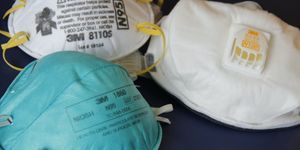Using RNA to Diagnose HPV Associated Cancer
Diagnostic tools are critical to modern medicine. They might be less exciting than a good therapy or drug, but doctors and scientists would essentially be working blind without them.
Our ability to view genetic information, analyze it, and even edit it has given us several new tools to study the human body. Analyzing DNA allows us to study diseases at their very source and effectively target drug development efforts. Genetics has also allowed us to advance our diagnostic abilities, with DNA and RNA being easy targets for next generation tests for cancer and other diseases.
For diagnostics, RNA is the most promising candidate for next-generation testing. While DNA functions as the blueprints of the cell, RNA are small copies of that blueprint used to build proteins. Unlike DNA, RNA also has several regulatory functions both in and out of the cell. The presence of RNA in the blood is one of the promising contenders for cancer diagnostics. Cancer tends to release a different set of RNA into the blood, which can then be caught by these new RNA tests.
In a new study out of the Washington University School of Medicine in Missouri, a team of scientists wanted to tackle a problem they perceived in RNA diagnostics. Currently, there are several different ways of isolating and analyzing extracellular RNA. Focusing on the RNA extraction and the subsequent analysis, the team hoped to create a comprehensive method of RNA isolation that could be used for future RNA studies.
The first step of RNA extraction, ultracentrifugation, is straightforward, and the team decided to leave it alone. The second step, the actual RNA extraction, was the primary focus. First, they saw that many studies utilized the molecule glycogen to enhance RNA extraction yields and found it effective in their tests. They then compared eight different exosome extraction methods (the containers that carry RNA in the blood) and found that a technique called miRNeasy was the best. The team used this alongside glycogen as their RNA extraction method. The team then tested the method on HPV associated cancers to see if they could identify an RNA “fingerprint.” They identified 116 miRNAs with altered expression levels in the exosomal RNA, several of which were consistent across all cancer cell lines tested. They also identified several RNAs that were differentially expressed in cancer or HPV positive cells than healthy cells.
This study identified the most effective RNA extraction method (out of those tested) and examined the RNA fingerprints of HPV and positive cancer cells. Both types of cells had fingerprints with several RNAs present at different levels compared to healthy cells. These standardization steps are a key indicator that technology is on its way into actual use cases, and with any luck, we will begin to see more RNA tests for cancer and other diseases.
Sources: Nature Scientific Reports, Qiagen, Unsplash









